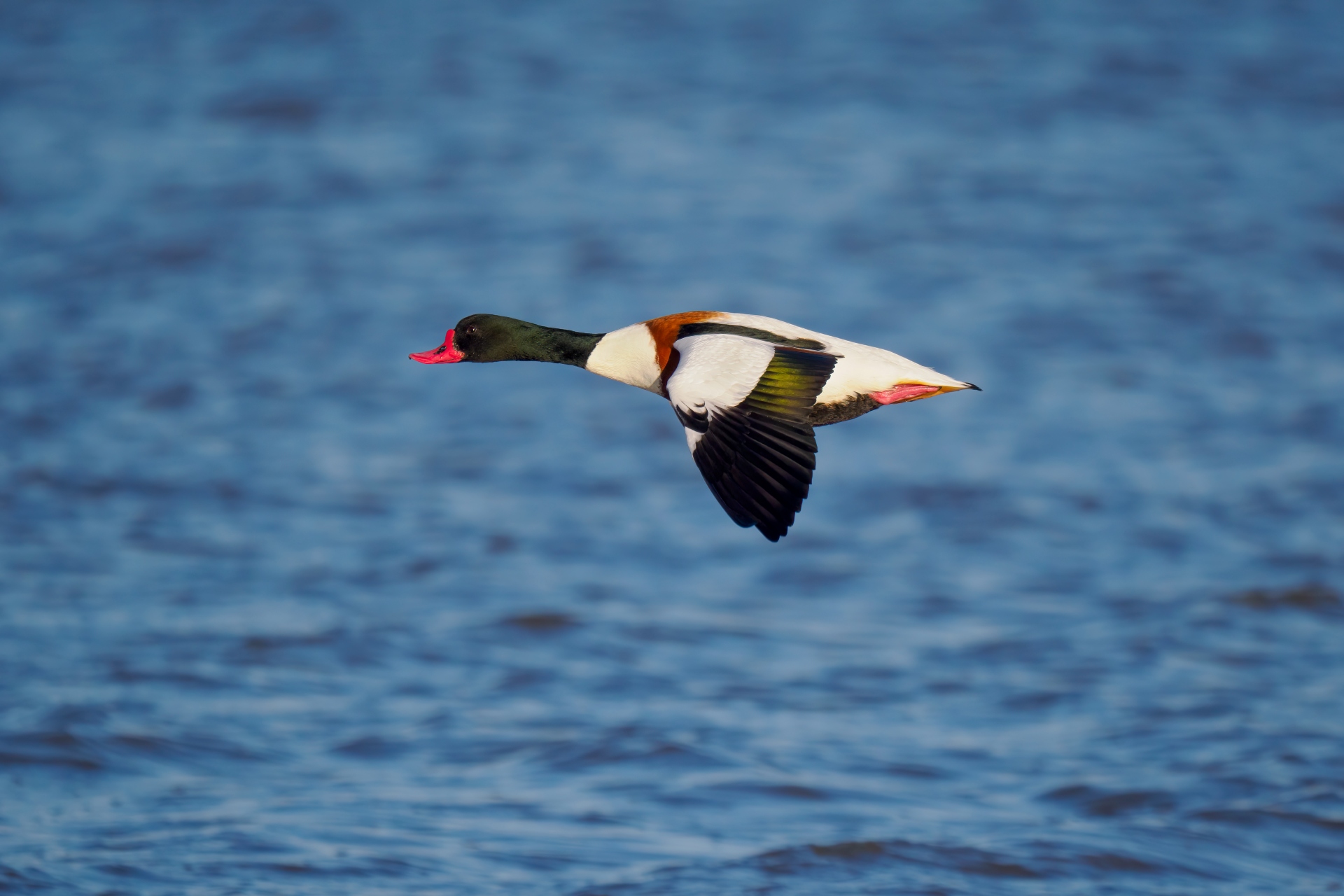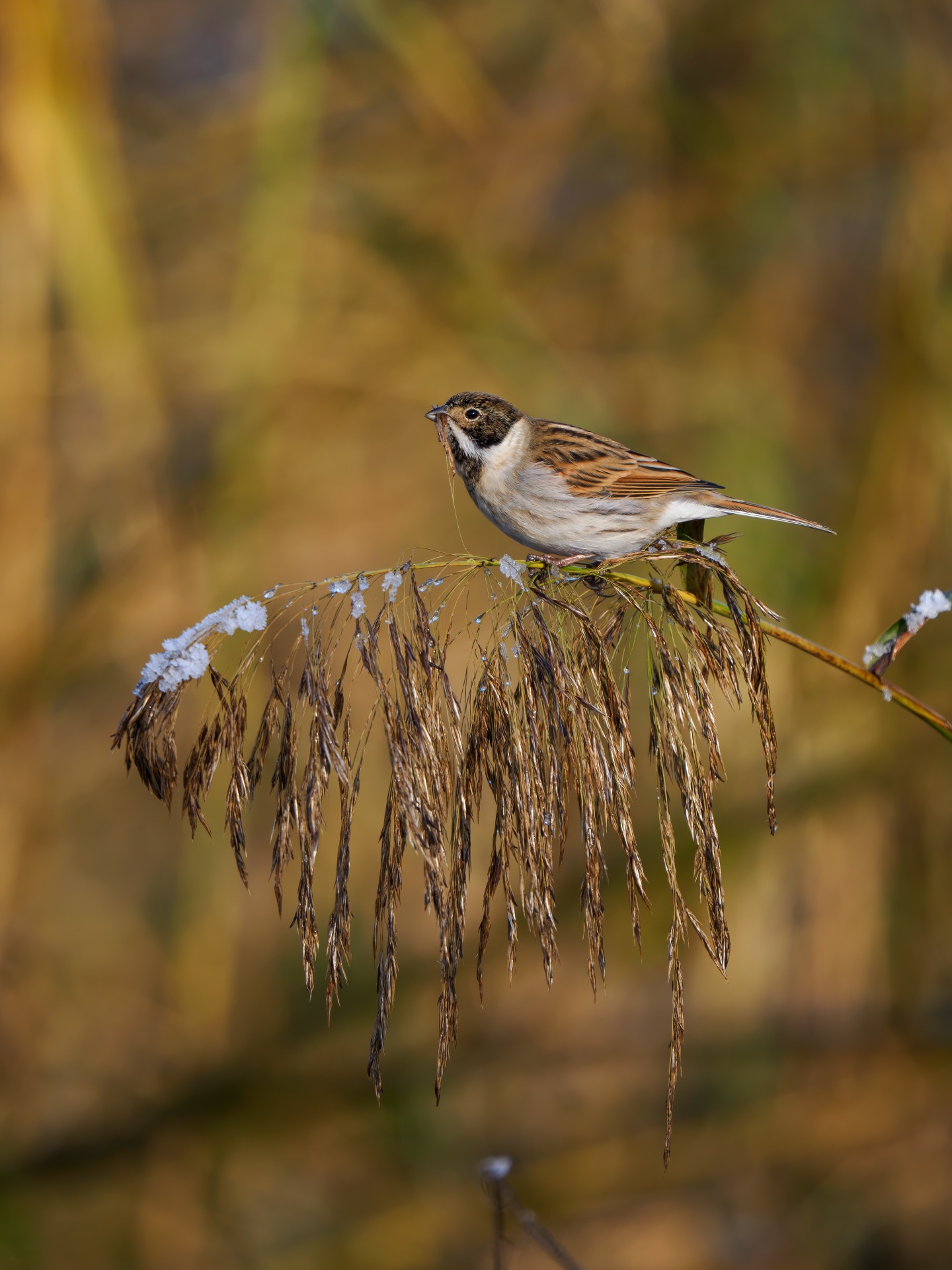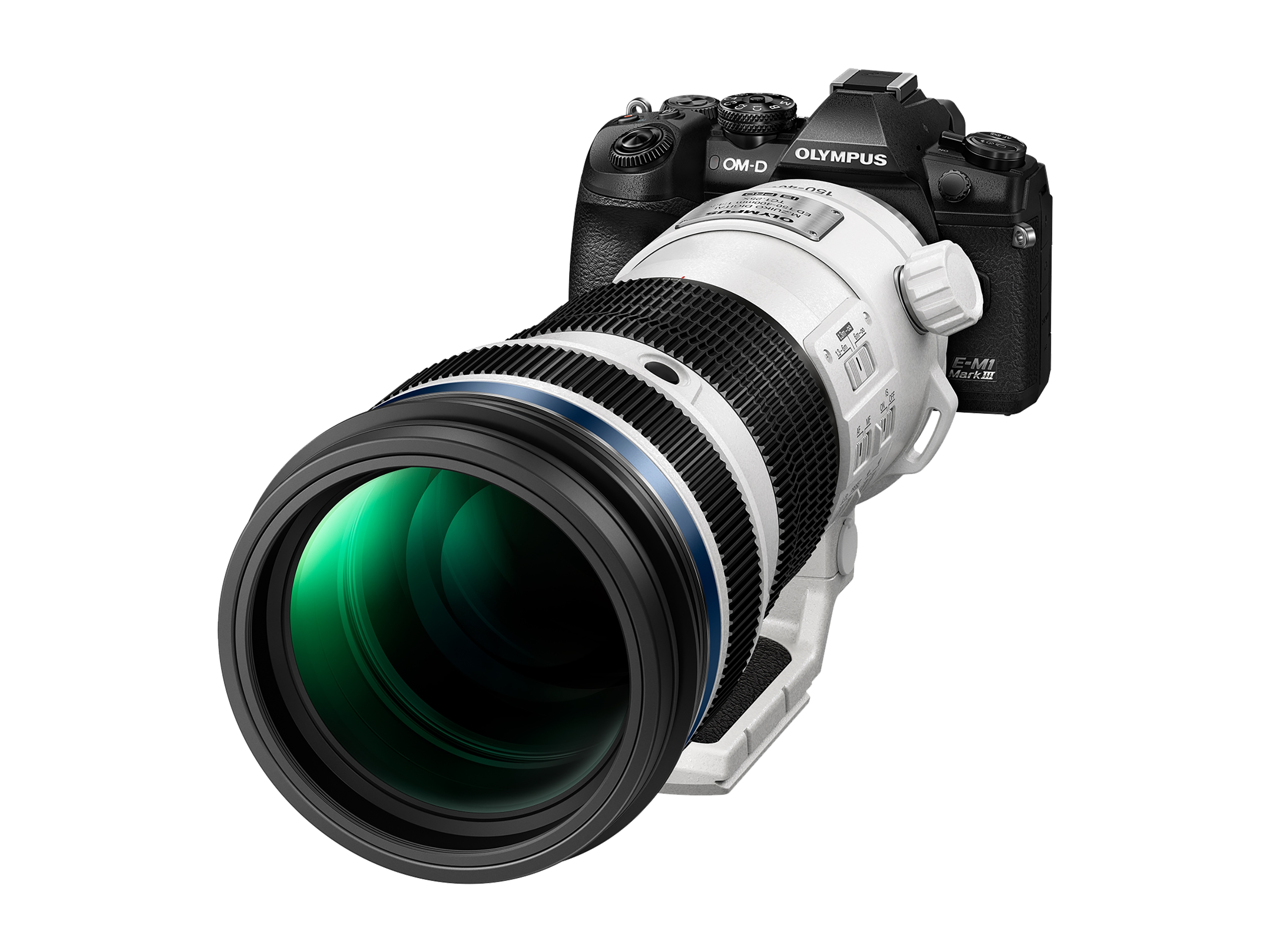Olympus OM-1 digital camera and M.Zuiko 150-400 mm f4.5 lens
The Micro Four Thirds (MFT) mirrorless system has gained a significant following among bird photographers in recent years. The MFT format refers to the smaller sensor, such as that at the core of the flagship 20-MP Olympus OM-1 body on review here, which provides a 2x 'crop factor', doubling the effective focal length of the lens to which it's attached.
In other words, the Olympus M.Zuiko Digital ED 150-400 mm f/4.5 TC1.25X IS PRO lens, also on test here, effectively becomes a 300-800 mm f4.5, or with the built-in 1.25x converter deployed, a whopping 375-1,000 mm at f5.6. These are dream numbers for the bird photographer – the more 'reach' and the faster the maximum aperture the better, and the zoom range offers superb flexibility. And all this in a package that weighs less than 2.5 kg. This, then, is the pinnacle of the MFT system. But how does it perform?
The lens, strikingly finished in white, is 42 cm long with the lens hood in place, but at 1.8 kg is lighter than it looks. The zoom mechanism is internal, so the lens does not extend and retract when you zoom in and out. The f4.5 maximum aperture is fixed throughout the zoom range, so there's little need to adjust settings as you change focal length. The 1.25x converter is conveniently positioned close to the shutter button of the camera and is deployed with the flick of a finger.
The camera is compact, but not overly so. I have fairly small hands and found it quite comfortable. I found the overall weight of this lens and camera perfectly manageable and used it exclusively handheld, but some people might like to use a monopod for extra stability.
Like most modern digital cameras, the OM-1 offers a huge number of options for customisation, whereby you can assign different buttons and wheels to different settings. I stuck with the default layout and found it straightforward to get used to. Switching between settings for a bright white Common Shelduck against some dark blue water and a Jackdaw flapping across a pale sky, for example, was quick and easy.

The animal tracking autofocus system worked well on birds in flight, such as this Common Shelduck (Kit Day).
If 1,000 mm isn't enough, this setup is also compatible with 1.4x and 2x teleconverters. I didn't have these for my testing period but reviews online suggest that they work well.
The best of my efforts with the lens were very sharp. Results seemed a fraction sharper and more consistently good without the 1.25x converter. On more distant subjects with the converter in place the results were more hit and miss, but this is to be expected with long lenses. I was hard pressed to notice any difference in autofocus with or without the converter.
Like many mirrorless cameras, the OM-1 includes an animal tracking autofocus system. The OM-1 even has a specific bird-tracking setting. This worked well, and I found it extremely valuable in allowing me to focus on other settings and composing the image, rather than worrying about reselecting the autofocus point. The system was quick to pick out the face of a female Reed Bunting against similarly brown Phragmites. Sometimes I felt the bird tracking was a bit uncertain; too keen to latch onto something that wasn't a bird (as in the case of a Water Rail walking among some frosty grass), or where there was more than one bird in the frame (a group of gulls on a fence), but this might improve by tweaking settings or with experience.

The autofocus system easily picked up this Reed Bunting against a similarly coloured background (Kit Day).
Shooting is extremely fast – blackout-free full RAW images at up to 50 frames per second (fps) with full autofocus and autoexposure. If you can live with locking AF and AE at the first exposure, the OM-1 will shoot at up to 120 fps. I stuck to lower speeds, and found the buffer (the number of images you can take before the camera has to pause to finish writing them to one or both of the two SD cards) to be very good. "Pro Capture mode" works by continuously taking images when you half-press the shutter, but only saving them in temporary memory. If you let go of the shutter button, these images get deleted, but if you fully press the shutter button it saves them. This means that if you are a fraction late to hit the shutter to capture a bird taking off, for example, with Pro Capture enabled you may well have nailed the shot anyway.
Weather sealing is an area where the Olympus system excels. The camera has an IP53 rating and the lens is IPX-1 rated, which offers peace of mind and is of great benefit if you get caught out in the rain.
The downside of the MFT system is a densely packed sensor with inferior image quality to full-frame options. The smaller sensor also yields a deeper depth of field – while the readout may be f4.5, in reality it is something comparable to f9. Deeper depth of field can be a good thing, for example if your subject is close and you want the whole bird from bill to tail to be in focus, but if you’re trying to isolate the subject from a distracting background, it’s working against you.
Both the lens and camera body possess image stabilisation, and these work in tandem to offer up to 8 stops of IS at the lowest zoom setting. This gives you more license to keep the ISO low when shooting stationary birds. The 1/60-second I used to photograph a Song Thrush on a frosty path early one morning is often adequate with this equipment. If you’re trying to freeze some action and/or are shooting in sub-optimal light, the higher ISO needed will cause image quality to suffer more noticeably compared to bodies with larger sensors. If you’ve experienced a modern full-frame body, particularly one with a higher pixel count, this MFT 20 MP sensor may take some getting used to, but software for reducing noise post-production is becoming increasingly sophisticated. What ISO setting is deemed acceptable will vary from one photographer to the next and depends on various factors including exposure and proximity to the subject, but some JPEGs straight from the OM-1 at ISO 4,000 looked pretty clean to my eyes.

At around £8,400, the combined cost of this Olympus gear represents a serious investment. Such a price tag may be unpalatable to more casual 'birders with a camera', and while the weight is very manageable compared to other rigs with this sort of reach, it might be too much if you're also carrying a scope and other paraphernalia for a day of birding. This equipment will appeal to those who want the sort of headline specs provided by 500-800 mm prime lenses that are traditionally the choice of the serious wildlife photographer, but don’t want the weight and potentially even higher costs involved. There is some compromise involved with this setup, but as a single lens and camera combination to quickly capture any bird that appears in front of you and offer unrivalled creativity in how you do so, it is well worth considering.
Further info
OM-1 camera
- Price: £1,999.99
- Size: 135 x 92 x 73 mm
- Weight: 511 g
- Guarantee: 2 years
M.Zuiko 150-400 mm lens
- Price: £6,799.99
- Size: 314 x 115 mm
- Weight: 1.875 kg
- Close focus: 1.3 m
- Guarantee: 1 year
Verdict
+ Wide zoom range and fast autofocus
+ Good image stabilisation
- Images can be noisy in low light

